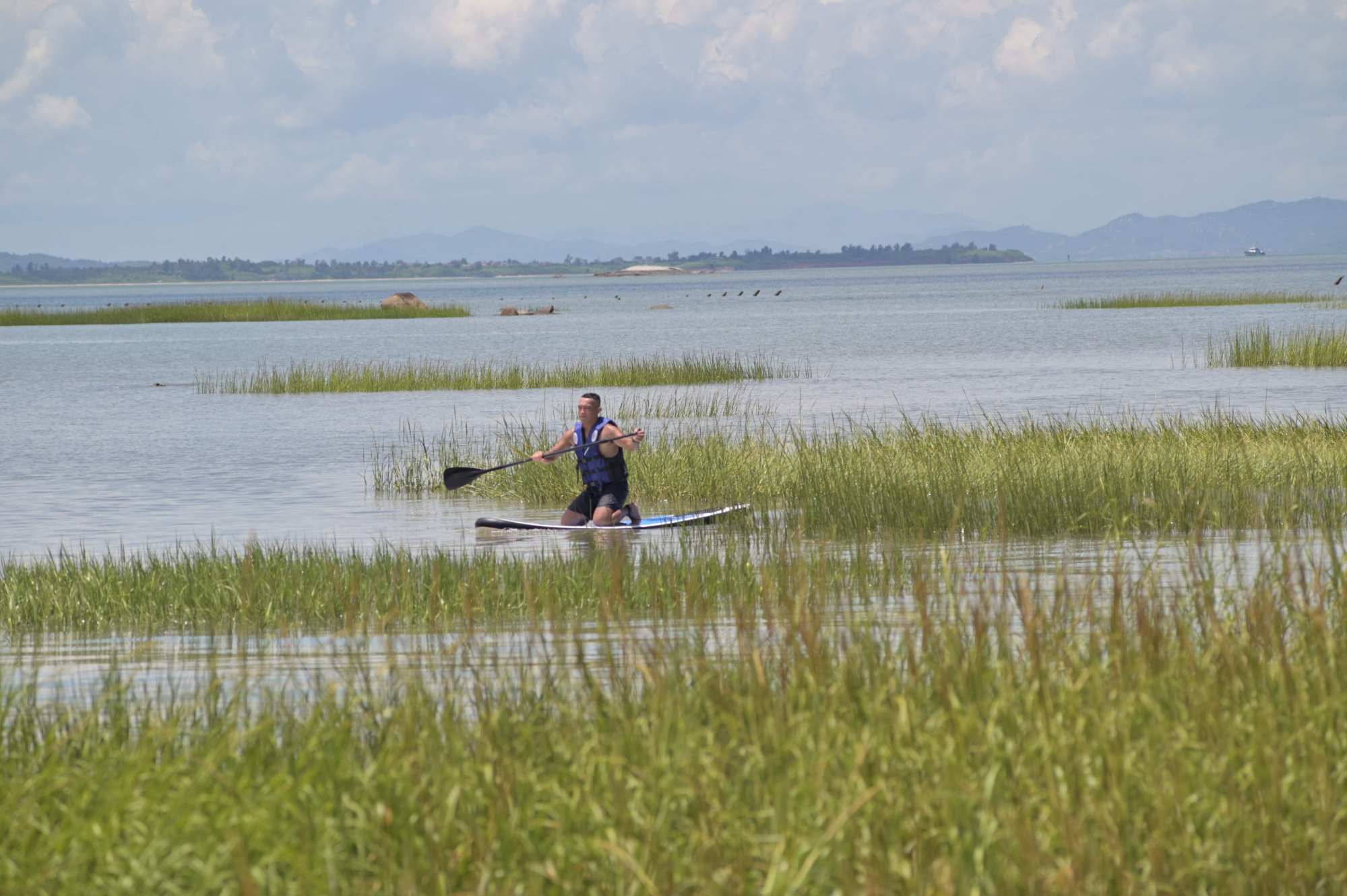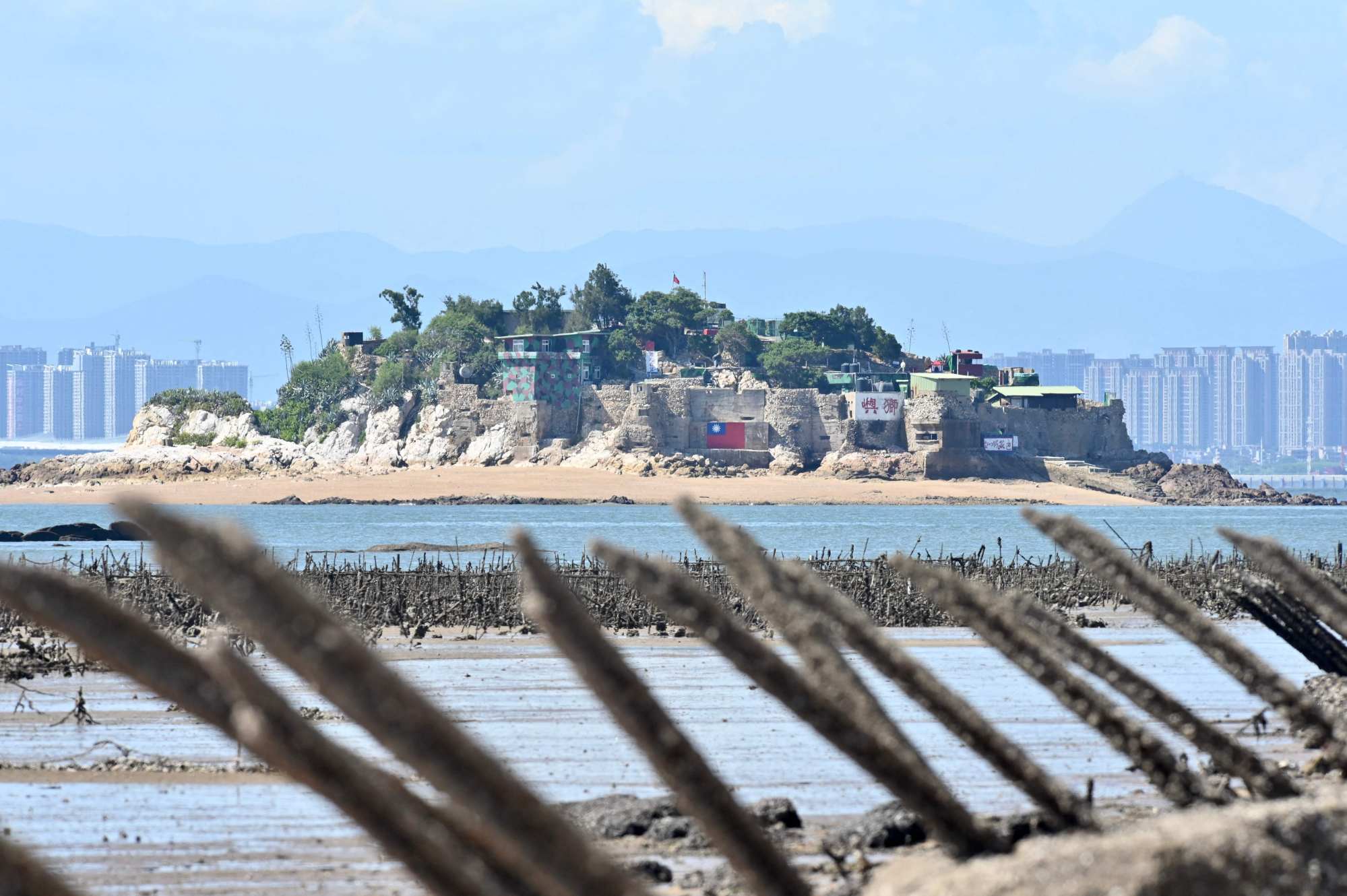
Unfazed by PLA drills, Taiwanese tourists flock to tiny Quemoy
- A former battleground, the Islets are just 3.2km from mainland China’s coast and have become a popular destination
- Visitors peer out of observation posts, walk by murals denouncing Beijing and take pictures of the mainland
The Taiwanese islets – also known as Kinmen and just 3.2km (2 miles) from mainland China’s coast – have become a popular tourist destination, and Beijing’s massive military drills this month failed to deter domestic visitors from jetting closer to their sabre-rattling neighbour.
Lin, a former soldier from southern Taiwan’s Pingtung county, refused to cancel his three-day trip, saying he believed Beijing was only trying to appease nationalist sentiment at home with its show of force.
“The price would be too high.”

Tensions in the Taiwan Strait are at their highest in decades as Beijing rages against a visit to Taipei earlier this month by United States House Speaker Nancy Pelosi.
But even amid the flurry of military activity, tourism in Quemoy continues.
Domestic flights continue to fly to the island, tour groups and buses crowd the islands’ popular sites while visitors hoarding souvenirs dot its airport floor.
Visitors still peer out of its observation posts, walk by murals denouncing Beijing and take pictures of mainland China from between the anti-landing spikes that dot the beach.
There is no use worrying [about a PLA attack]. We should be calm and get on with our lives
Quemoy is a former battleground where residents had to contend with occasional shelling from PLA artillery into the late 1970s.
But the islets opened up to tourists in 1993 and have never looked back.
Wartime relics and monuments of its militarised past are star attractions, regardless of Quemoy’s proximity to mainland China and the lingering threat of invasion.
“There is no use worrying [about a PLA attack]. We should be calm and get on with our lives,” said Vanessa Chu, 52, who travelled from the coastal city of Hsinchu.
“I hope for peace, as Taiwan is small and if the tensions continue, Taiwan will suffer more than China,” she added, speaking alongside her two sons.
Many Quemoy residents hold favourable views of mainland China after years of close trade and tourism ties – the island’s main source of drinking water is a pipeline from the mainland.
Yet visitors from mainland China are currently banned from travelling there because of Taiwan’s strict Covid-19 rules, which are similar to Beijing’s.
Beijing views the whole of Taiwan as part of China’s territory waiting to be “unified” one day, by force if necessary.
But on the other side of the strait in Xiamen, residents carry on with life much the same as those on the Quemoy beaches.
A young bride smiles and poses for a photoshoot on the sand while a man offers tourists binoculars to observe the small islands Beijing bombarded over half a century earlier, killing more than 600 people.

On nearby Lieyu, known as Little Quemoy and the closest inhabited islet to mainland China, Taiwanese tourists have their own look across the water.
They use a telescope from an old fortress to view a Xiamen billboard that reads “One country two systems, unify China”.
The slogan is intended for Taiwanese onlookers, a reference to the deal Beijing made guaranteeing Hong Kong certain freedoms and a high degree of autonomy ahead of its 1997 handover from British rule.
But the vast majority of Taiwanese have long rejected that model.
Worse may be in store as Pelosi visit roils Taiwan Strait, analysts warn
During Agence France-Presse’s visit to Quemoy, some tourists chuckled when a guide joked that the slogan in Xiamen could have been changed to “Use of force, unify China” as she struggled to locate the billboard with the telescope.
An elderly tourist from Taipei who declined to give his name said he believed Beijing would not strike Taiwan directly because “there would be too much loss”.
Lin, the former soldier, said he was prepared to fight if needed.
“Taiwan is my home and I am willing to stand out,” he said, paddleboard in hand.
“If we don’t protect Taiwan, who will protect us? Our democracy is valuable.”

.png?itok=arIb17P0)